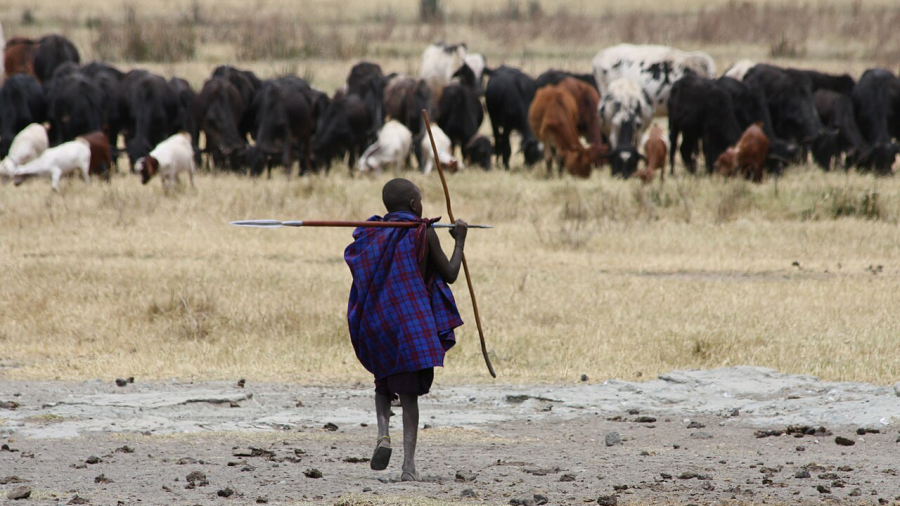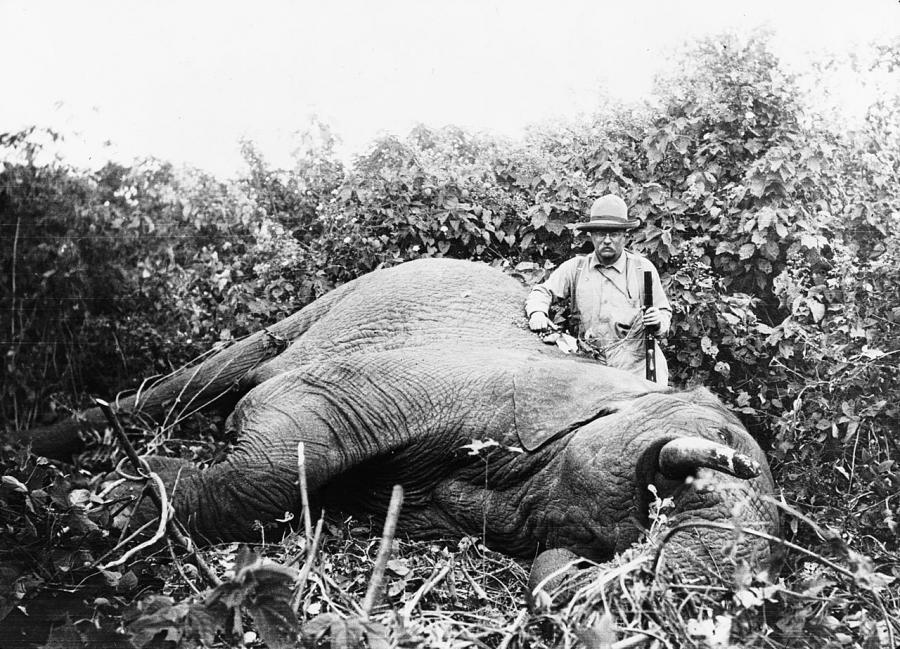
A downloadable version of this lesson is available here:
The language we use to communicate—along with other cultural artifacts such as images, films, music, and social media—has a life well beyond simple denotation, or surface meaning. Language is infused with normative cultural values, hegemonic power structures, bias, and subjectivity. Critical Discourse Analysis (CDA) describes a series of approaches to how socio-environmental (S-E) researchers may critically analyze texts and cultural artifacts to reveal these connotations and draw out the larger narratives that they support. What is the social context of the story being told, and why is the teller relating it in this particular narrative structure, lexicon, and moment in time? The goal of CDA is to reveal submerged power structures and elaborate on the role of discourse in both reflecting and constructing social realities. Unks studies the socio-environmental drivers of landscape-composition change in relation to pastoralism in Kenya and reveals how public narratives of “overgrazing,” which are often deployed to support wildlife conservation, can negatively impact the livelihoods of traditional pastoralists and affect the poorest groups most severely.
In this lesson, learners will use Narrative Discourse Analysis to analyze evolving discourses on the environmental effects of pastoralism in postcolonial Africa. They will evaluate how rhetorical tactics in newspapers may be deployed to support policy decisions that disenfranchise traditional pastoralists and whether the rhetoric surrounding pastoralism has changed through time. These discursive elements will help learners recognize editorial choices, bias, connotation, and subtext, and they will help learners grow more aware of the complex ways that journalism presents environmental realities and, thereby, influences public opinion and policy. Note: To complete this lesson, learners will need access to the database Nexis Uni, which is commonly available through university libraries. It is useful but not required to be familiar with the other SESYNC Critical Discourse Analysis resources, including the lesson on Environmental Journalism.
- Explore how international journalism presents S-E issues, with an emphasis on separating subjective from objective perspectives and interpreting cultural bias and hegemony.
- Seek to locate erasures or subordinations through the lack of discourse on a subject, and trace trends and shifts in journalistic discourse through time.
- Translate newspapers’ editorial choices into themes and reveal rhetorical patterns of discourse through time that support particular views of the governance of pastoral S-E systems.

For 5 minutes, discuss the values on display in the visual discourse of this image of U.S. President Teddy Roosevelt on African safari c. 1909. Ask interpretive questions, such as:
- What are the colonial values, wildlife uses, cultural norms, and residual effects of this depiction of big-game hunting by a white U.S. President on safari?
- What does the image denote and what does it connote? Suggest some connotative keywords or themes. Note to instructor: if learners need prompts, you might suggest: conquering wilderness, masculinity, colonial mastery.
- More than 100 years later, how may we experience its visual rhetoric differently from how its original audience might have perceived it (instructor prompts: greed, egotism, myopia)?
- In a contemporary version of this image, what elements might be depicted differently? Do contemporary values that critique the colonial-era domination of African cultures relate to a greater appreciation of traditional African pastoralist practices? Is there tension between pastoral grazing rights and wildlife preserves for tourism in African land-use policy?
Narrative Discourse Analysis: Postcolonial African Pastoralism (One, 75-minute class, plus 30 minutes of the next class; or two, 50-minute classes)
-
Learners should prepare for the session by reading the SESYNC Explainer on Narrative Discourse Analysis and read the paper by Shanahan (2013), paying special attention to the highlighted portions.
DocumentShanahan 2013 – Highlighted.pdf (720.13 KB) -
(10 min.) In class, after The Hook above, review the lesson's PPT slides.
Document -
(5 min.) Divide learners into small groups of ~four individuals. Aim to have at least five groups that together can cover the 40-year timeline of the Nexus Uni database. If the class is larger, you may assign groups with narrower time windows than the ones described below. Each group should open a browser window in the Nexis Uni database. Delimit the search to “news,” and search using the keywords “pastoralism” and “Africa.”
- The first group should narrow their “timeline” (left-hand column) to 1984–1989.
- The second group’s timeline is 1990–1999.
- The third group’s timeline is 2000–2009.
- The fourth group’s timeline is 2010–2019.
- The fifth group’s timeline is 2020–today.
-
(15 min.) Now groups will select the most relevant articles. Each of the four learners will skim 3–5 pieces (12–20 articles total per group). After this quick reading, groups should discuss themes and tools of their analysis. Learners may wish to review slides 4–6 from the PPT. Ask:
What keywords are essential to establishing the tone and topical focus across pieces? Identify at least five keywords and variations or synonyms that all learners should search for.
What human agency, history, and/or ethical stance is implied in the article’s depiction of human activity and change in ecosystems?
Who do journalists interview for authoritative views? (Is there a bias for government, non-governmental organization, scientist, or pastoralist views?)
What is the distribution of rhetorical tactics among ethos (author or authority’s reputation), pathos (emotion), and logos (facts and statistics)?
-
(20 min.) Groups now use their analytical themes to conduct a deeper discourse analysis. Each of the four group members should closely read each of their 3–5 articles (5–7 min. for each) and take notes on keyword-use quantities (use the Ctrl + F function); the keywords’ effects on tone and topic; agency, ethics, and responsibility; rhetorical tactics employed; and quoted sources of expertise.
-
(20 min.) Groups now process their data, both quantitative and qualitative, through a consolidation of individual findings. What are notable keywords across articles in your time range? What tone, agency, and authority do the pieces invoke? Prepare a short presentation of these results to share in a full-group session in the next class meeting.
-
(5 min.) In the next class meeting, allow each group to consult and finalize their brief presentation.
-
(25+ min.) Ask each group to present their results in ~5 minutes each. Conclude with the full class’s summary on how newspapers have depicted African pastoral practices through time. The discussion might include:
Evolutions in editorial tone and content from 1984 to today and theories for why public discourse may have evolved based on climate and ecosystem conditions, readership and editorial desires, cultural trends in relation to older colonial mentalities, and contemporary cultural views.
Hypotheses on how the tone and content of articles affects the readership’s sense of the human role in environmental change (both + and -). How does the discourse construct narratives about environmental governance, individual agency, and culture-driven impacts on S-E systems?
-
Historical Ecologies of Pastoralist Overgrazing in Kenya: Long-Term Perspectives on Cause and Effect
This journal article examines the specter of “overgrazing” on narratives of ecological degradation in Kenyan savannah ecosystems. The authors argue that specific environmental, political, and cultural conditions related to histories of land use result in nuanced and contextual effects of pastoralism. They critique outdated conservation and economic policies that focus on the supposed inefficiency of pastoral livelihoods.
Boles, O.J.C., Shoemaker, A., Courtney Mustaphi, C.J. et al. (2019). Historical Ecologies of Pastoralist Overgrazing in Kenya: Long-Term Perspectives on Cause and Effect. Human Ecology, 47, 419–434. https://doi.org/10.1007/s10745-019-0072-9
-
PASTRES: Pastoralism, Uncertainty and Resilience: Global Lessons from the Margins
This website, developed by a group of researchers, provides a wealth of articles and teaching resources for understanding these practices from a pastoralist viewpoint. Resources include themes, case studies, lesson plans, and policy events.
PASTRES (Pastoralism, Uncertainty and Resilience: Global Lessons from the Margins. (n.d.). Home Page. https://pastres.org
-
Theoretical framework for ecological discourse analysis: A summary of New Developments of Ecological Discourse Analysis
This open access article provides an ecological grammar for understanding several constructs of ecological discourse. As a summary of a book, it’s an accessible length for a quick comprehension of how environmental representation can frame discourses of eco-benefit, eco-ambivalence, and eco-destruction. It provides many flow diagrams that go into the linguistic tools for analyzing language construction.
Cheng, M. (2022). Theoretical framework for ecological discourse analysis: A summary of New Developments of Ecological Discourse Analysis Journal of World Languages, 8(1), 188-226. https://doi.org/10.1515/jwl-2021-0030